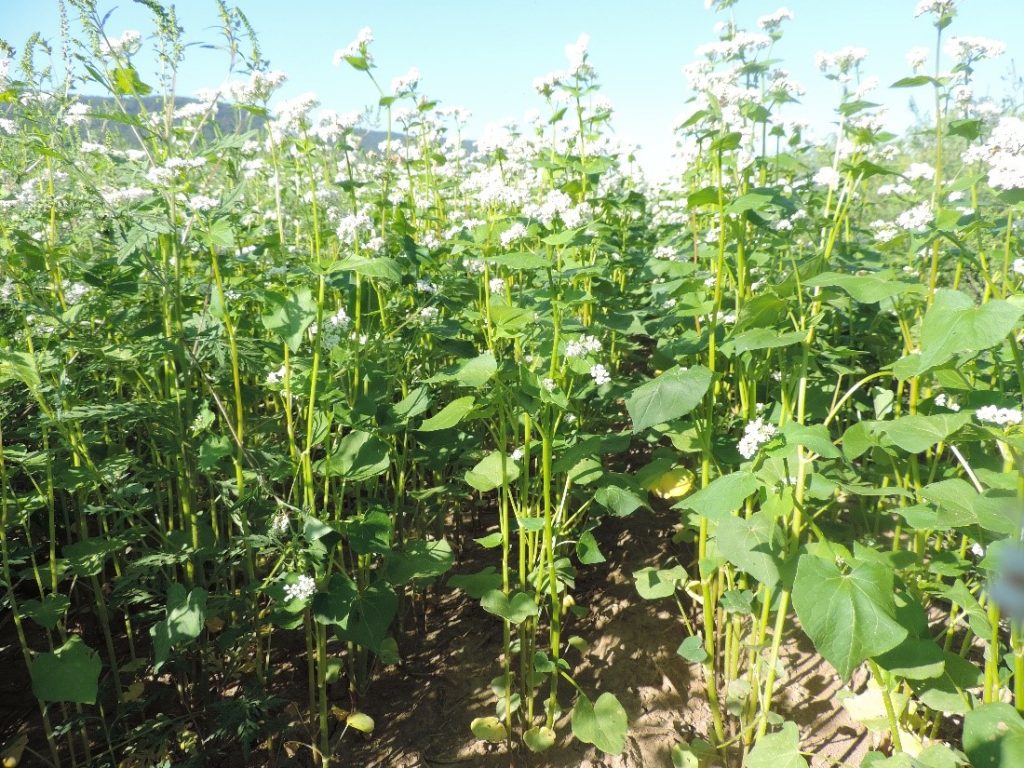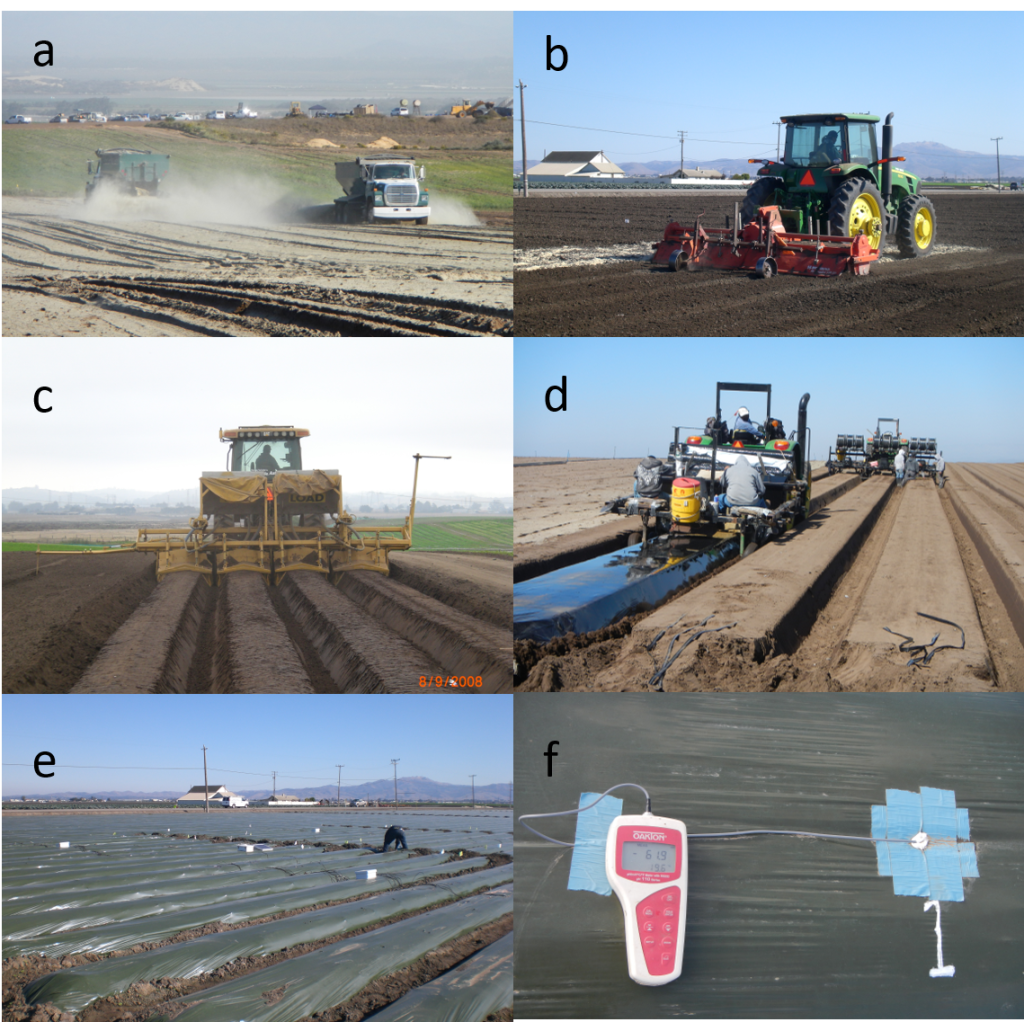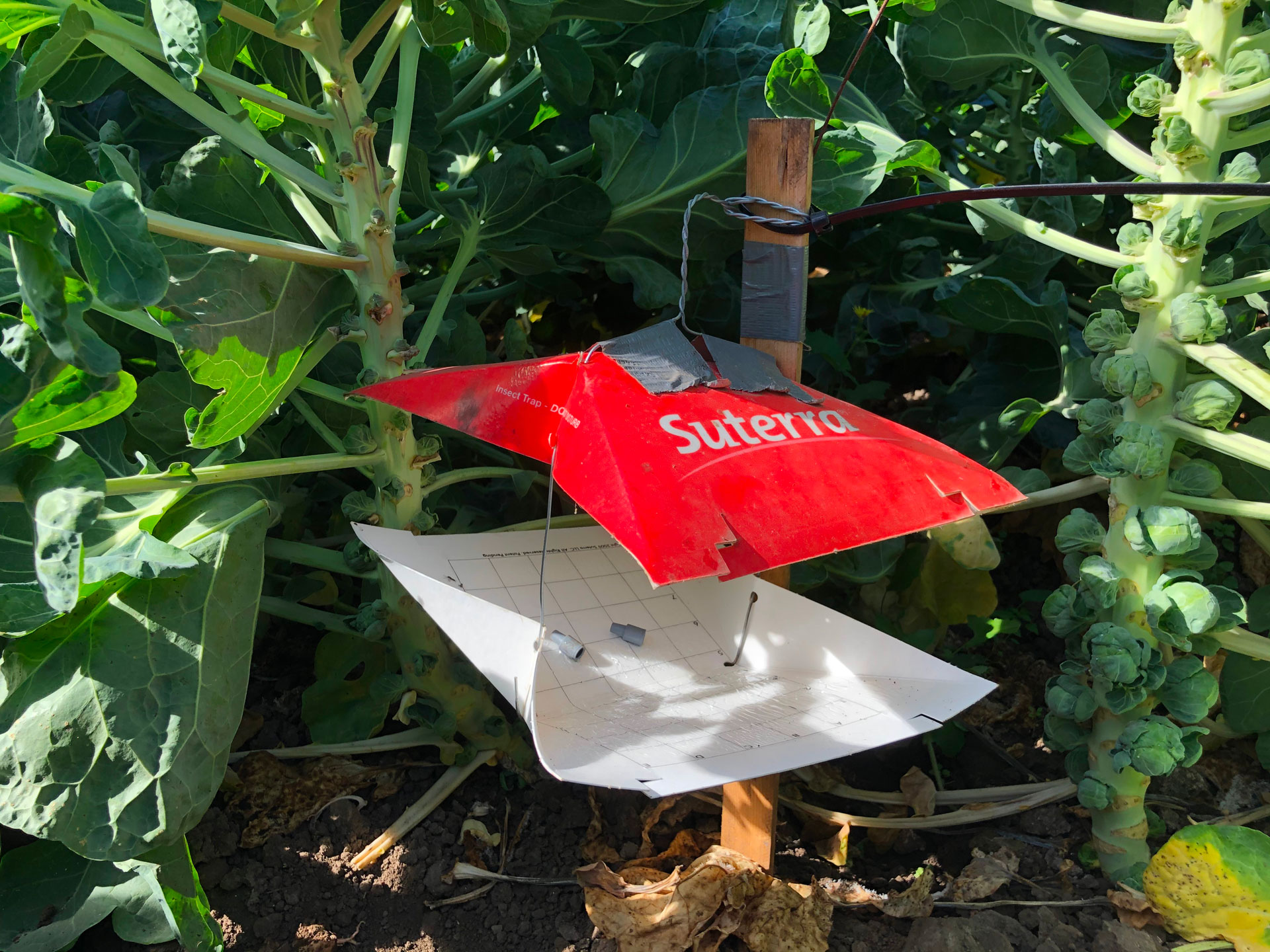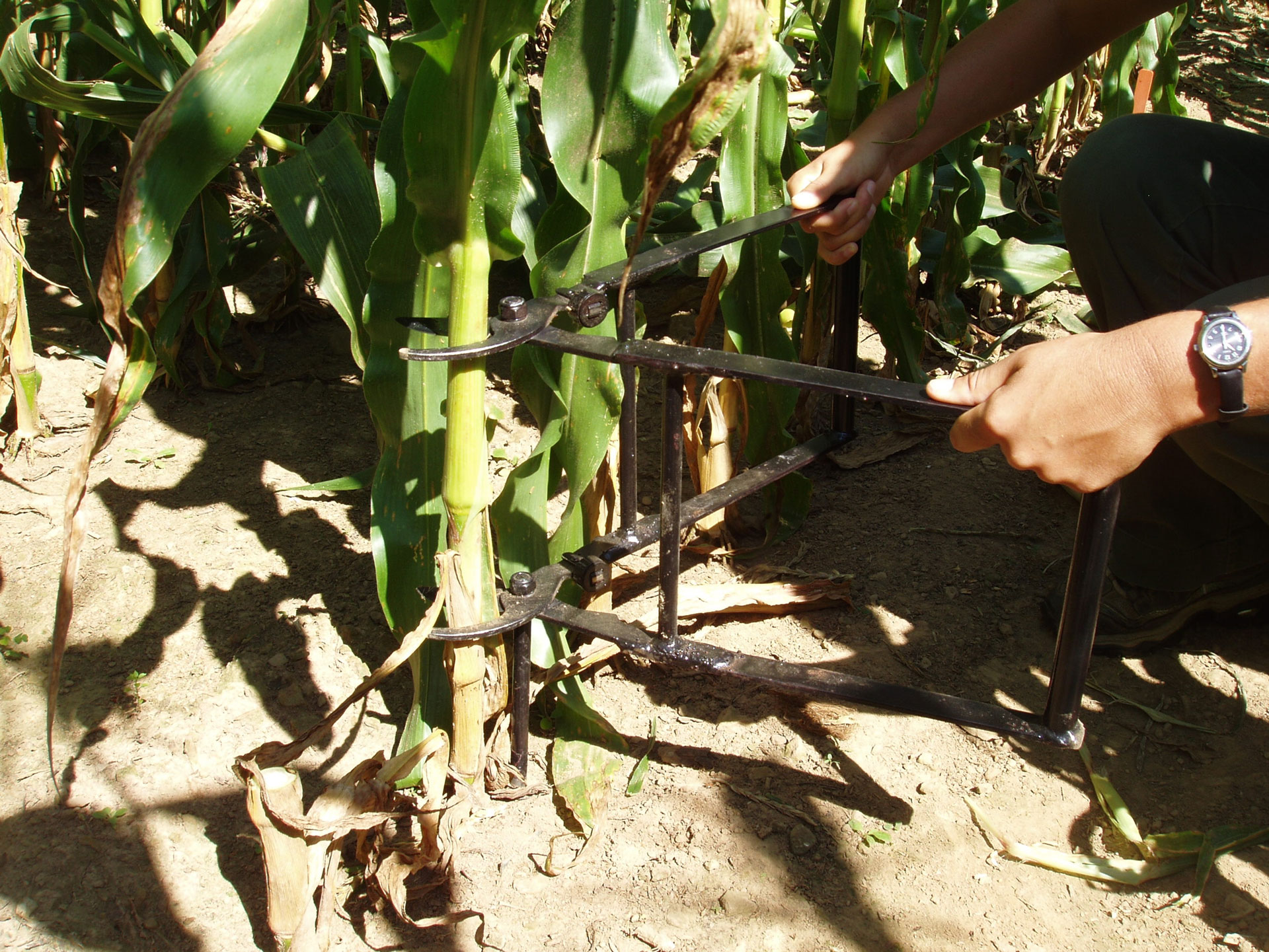
Soilborne pathogens and pests, such as insects and weeds, are a frequent threat in most organic cropping systems. Organic farmers manage soilborne pathogens and pests by applying organic amendments such as composts, growing certain cover crops, using crop rotations and planting resistant varieties.
Studies show organically managed fields tend to be more suppressive to soilborne pathogens than conventional counterparts. Yet, organic crops can experience mild to devastating damage by soilborne pathogens and pests, resulting in lower yields. Organic farmers continuously seek systems-based approaches to address soil problems, especially for high-value crops such as vegetables and fruits.
This article, the first in a two-part series, discusses anaerobic soil disinfestation (ASD), an organically acceptable method within an integrated management system to reduce losses due to pathogens and other pests.

What is ASD? How Was it Developed?
ASD is a biological method to suppress a range of soilborne pests and pathogens. It was developed as an alternative to fumigants in the Netherlands and Japan independently around 2000. In both countries, flooding is a common practice in agricultural fields and has been known to suppress soilborne pathogens (e.g., Verticillium dahliae) for vegetables grown after draining water. Also, the use of solarization, which typically requires a daily maximum soil temperature of 110 degrees F or above at six inches depth, has been limited due to insufficient solar radiation.
ASD was developed by integrating the principles of flooding (i.e., anaerobic decomposition) and solarization (i.e., use of plastic mulch) combined with the application of carbon-rich organic amendments. A key aspect of the ASD treatment is the selection of labile (easily decomposable) carbon (C), which may depend upon the availability of agricultural byproducts in different regions (Figure 1). Cover crops and crop residues can also be used as C sources for ASD (Figure 2, and Figure 3). With this approach, ASD can be applied in areas with lower soil temperatures where solarization would not be effective and in areas where limited water availability, topography or soil properties do not allow the use of flooding.

How Does ASD Work?
SD controls soilborne pests and pathogens by creating temporary anaerobic conditions which enable a series of fermentation processes to occur as microbes feed on the added C. During this process, volatile organic compounds, organic acids, sulfur-containing compounds and Fe2+ and Mn2+ ions are produced, and shifts in the soil microbial community occur that alter the microbial ecology of the soil and have direct and indirect activity against soilborne pathogens.
At the same time, a sequence of microbial groups starts feeding on the labile C provided and then feeds on metabolites derived from the fermentation process. The soil is never sterilized or left void, but there is a shift of activity from one group to the next, leading to the generation of pest and pathogen suppressive soils. Finally, as the source of labile C is depleted, the soil returns to aerobic conditions and a crop can be established.
Aside from suppressing soilborne pests and pathogens, ASD with common C sources modifies the soil environment to benefit the following crop (Figure 4). ASD results in some of the same benefits that organic amendments in general provide, including increasing soil organic matter and cation exchange capacity and improved soil physicochemical properties. Increases in beneficial microorganisms, such as non-pathogenic nematodes, fungi and bacteria associated with disease suppression and growth promotion, have been documented with ASD. Many consider this approach to be good for soil regeneration, decreasing allelochemicals and increasing microbial activity.

What Are the Steps to Implement ASD?
ASD is performed in three steps (Figure 5). First, incorporate a labile C source into the soil to feed indigenous soil microbes. A labile form of C is necessary for bacteria to quickly initiate the fermentation process. Non-labile C, such as bark, wood chips and composts, are not effective. Any locally available labile C source can be used (see Part 2 of this article in the next issue for typical C sources for different regions in the U.S.)

Second, as quickly as possible, cover the soil with plastic mulch to limit oxygen supply and gas exchange. Third, drip-irrigate 1.5 to 2 acre-inches of water to start and maintain the three-week fermentation process. The first irrigation should saturate bedded soil uniformly as much as possible without collapsing the bed structure. Then maintain at or above field capacity during the treatment. In sandy soils, adding water in repeated increments can help maintain adequate soil moisture for anaerobic conditions.
The stronger the anaerobic condition and the higher the soil temperature, the more suppressive the ASD treatment tends to be. Measuring soil redox potential (Eh) using oxidation-reduction potential (ORP) sensors allows researchers and growers to monitor the level of the anaerobic condition in the soil during ASD (Fig. 5f). The pungent odor of soil cores is also indicative of anaerobic fermentation.
After the treatment period, holes are punched into the plastic mulch for planting, facilitating aeration of the treated soil. Typically, it is safe to plant transplants within one week of punching holes.
How Widely has ASD Been Used?
Research has been done in multiple areas of the U.S., including California, Florida, Tennessee, North Carolina, Washington, Oregon, Pennsylvania, Virginia, Michigan and Ohio, among others, both in field and high tunnel production systems. Crop types tested include berries, vegetables, tree fruits and cut flowers (Figure 6) (See Part 2 of this article for ASD-applied crops and target pests in different regions of the U.S.)
ASD has been used at commercial scale in California berry fields since 2011, but it is just starting in other regions and crops. There is research on ASD being conducted worldwide, including continued study in the Netherlands, Japan, China, Nepal, Spain and Italy. Many producers in these regions utilize ASD commercially, particularly on small farms and protected cultivation systems that offer limited opportunities for adequate crop rotation.

Different Names for this Practice
ASD was originally described as biological soil disinfestation (BSD) or reductive soil disinfestation (RSD). Work in the U.S. on this topic has more consistently been referred to as ASD as the need for anaerobic conditions is a principal difference between this approach and other methods. Each name emphasizes the component that each research group considered to be a vital characteristic of the approach.
At this stage, all would agree that this is a biologically based method for which the achievement of anaerobic conditions to a certain level is critical for the efficacy in controlling soilborne pests and pathogens. Regardless of the names used by each group, research continues to characterize the physical, chemical and biological transformations that take place during the treatment. It is likely that the broad-spectrum efficacy of ASD, which results in the simultaneous management of several soilborne pests and pathogens, is due to multiple mechanisms, which provides a multi-tactic approach that is easy to apply.
An approach alternative to ASD is biosolarization developed by combining soil solarization with the application of organic amendments. This approach relies mainly on developing high soil temperatures through the solarization effect obtained using transparent mulching film. Therefore, its application is limited in regions where solarization is effectively used.
Does ASD Control Weeds?
When properly applied, especially in warmer regions, ASD significantly reduces weed pressure. In some studies, broadleaf weed germination was reduced 40% to 60%, and perennial weeds such as nutsedges were reduced by more than 75% compared to totally impermeable film without ASD treatment. Grass weeds are consistently suppressed under ASD treatments, preventing grass weed emergence in planting holes through the season. Anaerobic conditions and changes in soil chemistry may be responsible for inhibiting the growth of germinated weeds, which can be influenced by the type of C source used and its application rate.
Does ASD Affect Nutrient Availability?
The amendments that are used for ASD application strongly influence nutrient dynamics. Increased availability of potassium, calcium, magnesium and micronutrients is common with many different organic amendments used for ASD. It largely depends on the composition and application rate of the amendment used. In defining the application rates for every source of C, it is important to consider the composition of the organic amendment to avoid an excess of nutrients.
The inputs definitely influence nitrogen dynamics under ASD, and the C:N ratio of the C sources can affect the subsequent release and availability of N and other nutrients for the crop. For example, when composted broiler litter is used for ASD, soil ammonium and nitrate are lowered by the combined application of litter and molasses. Generally, plant nutrient uptake is improved with ASD. In some cases, this has also been reflected by higher concentrations of nitrogen, phosphorus, potassium, calcium, magnesium, iron, boron and zinc in fruit. See next month’s issue for more information on working with ASD in organic cropping systems.





